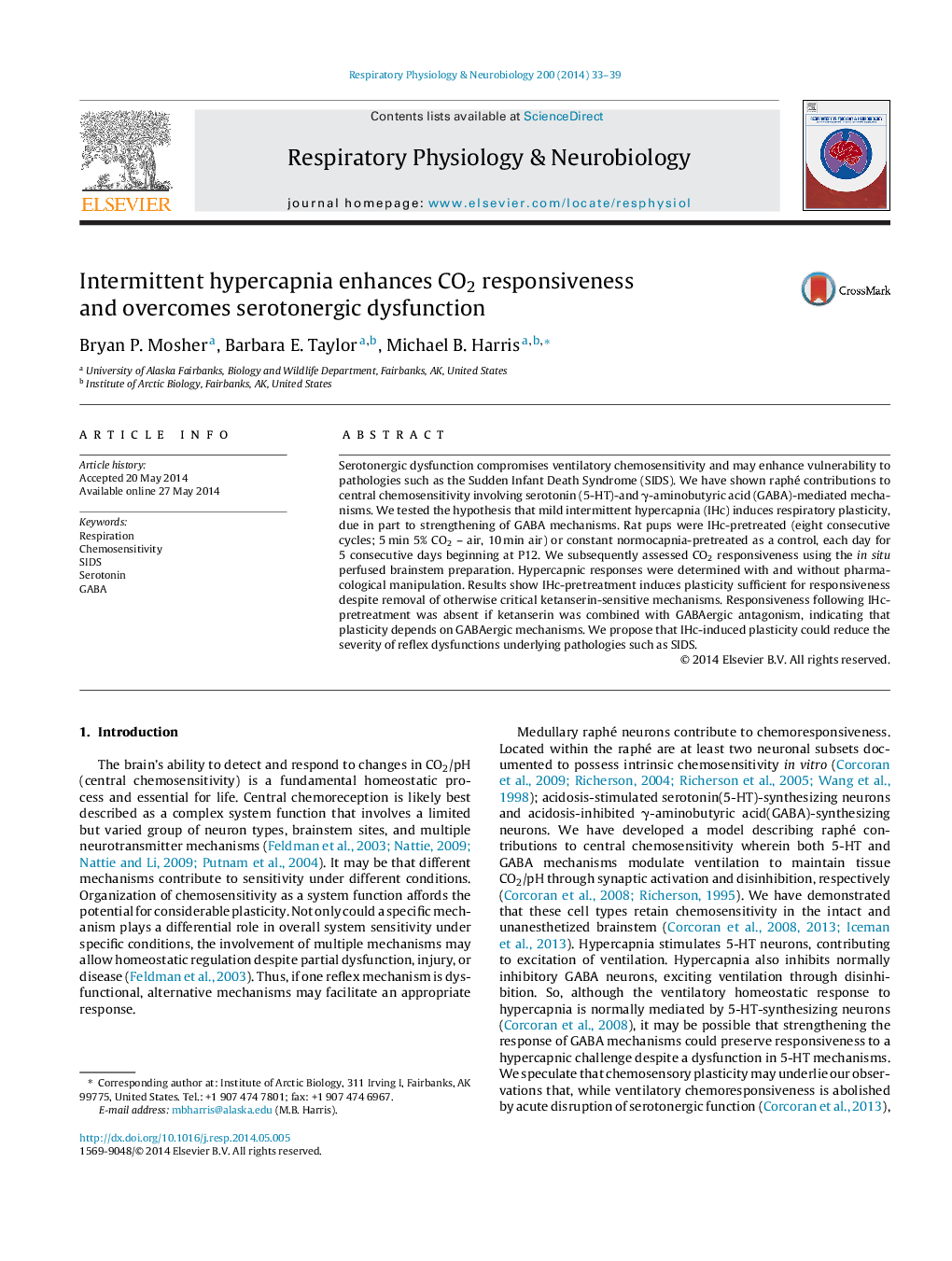| Article ID | Journal | Published Year | Pages | File Type |
|---|---|---|---|---|
| 2846994 | Respiratory Physiology & Neurobiology | 2014 | 7 Pages |
•We confirm that chemoresponsiveness depends on ketanserin-sensitive 5-HT mechanisms.•Intermittent hypercapnia pretreatment maintains chemoresponsiveness despite removal of critical 5-HT mechanisms.•Intermittent hypercapnia enhancement of chemoresponsiveness is dependent on GABA mechanisms.
Serotonergic dysfunction compromises ventilatory chemosensitivity and may enhance vulnerability to pathologies such as the Sudden Infant Death Syndrome (SIDS). We have shown raphé contributions to central chemosensitivity involving serotonin (5-HT)-and γ-aminobutyric acid (GABA)-mediated mechanisms. We tested the hypothesis that mild intermittent hypercapnia (IHc) induces respiratory plasticity, due in part to strengthening of GABA mechanisms. Rat pups were IHc-pretreated (eight consecutive cycles; 5 min 5% CO2 – air, 10 min air) or constant normocapnia-pretreated as a control, each day for 5 consecutive days beginning at P12. We subsequently assessed CO2 responsiveness using the in situ perfused brainstem preparation. Hypercapnic responses were determined with and without pharmacological manipulation. Results show IHc-pretreatment induces plasticity sufficient for responsiveness despite removal of otherwise critical ketanserin-sensitive mechanisms. Responsiveness following IHc-pretreatment was absent if ketanserin was combined with GABAergic antagonism, indicating that plasticity depends on GABAergic mechanisms. We propose that IHc-induced plasticity could reduce the severity of reflex dysfunctions underlying pathologies such as SIDS.
